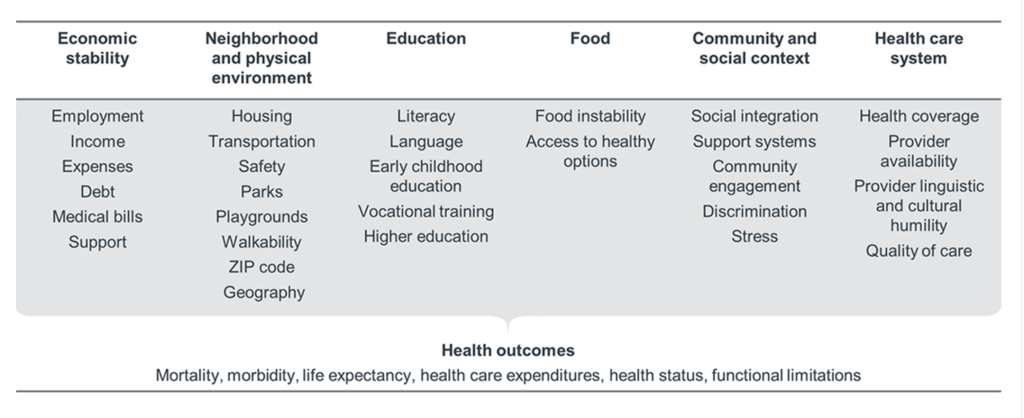 Read the latest INSIDER NEWS
Read the latest INSIDER NEWS
Strategies for Open Enrollment
The 2023 benefits open enrollment period (generally Nov. 1 – Jan. 15) will be especially demanding as companies continue to address the needs of a combo of onsite and remote workers. Will you hold in-person meetings, virtual enrollment fairs, or a hybrid? It’s a new landscape, so sharpen your shears and be prepared to forge a new path for your clients.
Experts at Mercer contributed this guidance:
JUNE TO SEPTEMBER: Make a plan and develop a strategy.
- Set goals and measures for outreach, use of digital resources and enrollment
- Conduct employee listening sessions — VERY IMPORTANT
- Determine your media plan, develop key messages and identify all audiences, making content personal, simple and direct
SEPTEMBER TO OCTOBER: Get the word out.
- Distribute a pre-enrollment flier (printed and online)
- Hold a virtual benefits fair
- Distribute an enrollment packet (printed and online)
NOVEMBER TO DECEMBER: Ready, set, go.
- Launch enrollment through a benefits portal, for a period of about three weeks.
- Take this opportunity to rethink your approach to open enrollment.
SHRM Author: Stephen Miller, CEBS Read article
MEDICARE
Need Back Office Services for Medicare Enrollment? Easy-peezy
Whether Medicare is your bread and butter or you sell none of it, Senior Market Sales® (SMS) has a Medicare solution so you never have to turn away clients who turn to you for Medicare help. For example, if you are a senior health insurance agent with clients or friends who reside in states where you’re not licensed to sell Medicare health plans or you’re not certified to offer Medicare Advantage Prescription Drug plans, you can easily refer them to Medicare BackOffice by Insuractive.
The deets: Services are free of charge to you and your clients. Referral fees are only paid for those Medicare Supplement and Medicare Advantage policies that are issued and paid by the carrier. The amount of the referral fee varies by product but generally ranges from $100 to $200. No referral fees are paid on Medicare Part D prescription drug plans. More info here.
Lower Cost Options Most Popular with Seniors Turning 65
New-to-Medicare beneficiaries are opting for lower cost Medicare Supplement plan options according to the American Association for Medicare Supplement Insurance (AAMSI).
“Some 11,000 Americans turn 65 every day and become eligible for Medicare,” explains Jesse Slome, AAMSI’s director. “Medicare Supplement, or Medigap, remains a highly popular choice but there appears to be greater interest in lower cost options.” Read Article
Clients Still Working at 65? Keep Them Up to Speed on Medicare
When you have clients edging up on qualifying for Medicare at 65 there’s lots to consider. You can help them weigh their options carefully to maximize coverage and avoid penalties and explore the many additional issues and questions.
Read more.
MARKETPLACE
CMS Infographic — U.S. Health Care Spending: Who Pays? Download Here
Wow — have there ever been major shifts in who pays for all these healthcare services in the past 60 years! We’re talking hospital care, physician services, long-term care, prescription drugs, and other related services and products in the U.S. Let’s just say that between 1960 and 2020 it’s been a dramatic 60 years!
According to CMS data, in 1960, only half of hospital care was paid for by insurance, and 96% of spending on prescription drugs came out of the consumer’s pocket. The creation of Medicare and Medicaid in 1966 and the rise of private insurance in the following decades led to increasing shares of spending paid for by insurance and decreases in the share of out-of-pocket spending.
The interactive graphic uses data from the Centers for Medicare & Medicaid Services (CMS) to show national spending on personal health care1 from 1960 to 2020 by payer and spending category.
Source: National Health Expenditure historical data (1960–2020), Centers for Medicare & Medicaid Services.
See entire CMS collection of current and past editions of Health Care Costs 101.
On the Precipice: ACA Marketplace Premiums Poised to Jump
Not such good news …. Health insurers’ preliminary filings with state regulators point to a 10% median bump in rates for enrollees in 2023, a Kaiser Family Foundation analysis found. Read article.
Fast Forward — California in 100 years? Futurists Seek to Help Officials Shape the Next Century
Visions of Sleepy Hollow? Instead of simply taking knee-jerk actions (or waking up surprised!), California 100, a statewide initiative incubated at the University of California and Stanford University, is partnering with the nonprofit Institute for the Future. Together they’ve researched how the state may change, and aspire to help guide both political leaders and regular Californians through a process they hope will lead to making decisions based on a new long-term vision. Researchers created detailed scenarios for 13 different issues, from housing to health and the environment. Curious? Read more here.
Reinstate Nondiscrimination Protections, says HHS
HHS’ proposed rule seeks to strengthen Section 1557 of the Affordable Care Act. which prohibits discrimination on the basis of race, color, national origin, sex, age and disability in healthcare programs that receive federal financial assistance. Read here.
Health Insurance is No Guarantee of Good Health
Non-partisan study reveals: How people identify across racial and ethnic lines can be a greater indicator of their health than their insurance status
If you depend on employer-sponsored health care like many Americans, you might be managing complex, costly health conditions and face significant gaps in diagnosis and disease management across race, ethnicity and income levels. This is according to a new analysis from Morgan Health and NORC at the University of Chicago, a nonpartisan and objective research organization. Read here.
Advisory Board Cheat sheet: Health disparities at the point of care
Take a look at Advisory Board’s resource to learn how disparities in care delivery impact patients and health systems and find out the key conversations you should be having. Download now

The Evolution of Telehealth 2.0
“Telehealth soared during the Covid-19 Pandemic, and it’s one solution that’s helped make healthcare more accessible. But it has had many limitations, as care is reduced to what can be provided over the phone or web—until now. EZaccessMD is revolutionizing the model by addressing mobile urgent care.”
says Author Sarah Gunter for The Granite List
Read more
RETIREMENT
Alternatives to State-Mandated Retirement Plans Offer Better Savings Options
For small businesses, traditional 401(k)s, payroll-deduction IRAs and SEP-IRAs represent far superior approaches to state-mandated retirement plans. Read more.
C-suite versus HR: How retirement plan outlook can differ by role
Your role in an organization can have a huge influence on what you think, particularly about your retirement plan, and what you might offer to workers. This case study by Think Advisor looked at survey feedback to contrast C-suite opinions and those in HR roles. Find out what drives each group and how their views can impact your own approach. Learn more.
BIG PHARMA
Infections Grow More Resistant, As Big Pharma Backs Off on New Antibiotic Development
Existing drugs still treat most infections. But that has discouraged investment in new drugs that will be needed when — not if —the old ones fail. Read more.
GOOD NEWS — What’s going RIGHT
Is the World Really Falling Apart, or Does It Just Feel That Way?
For your mental health, put bad news in perspective, leavened with awareness of the progress humanity continues to make on most fronts.
From The New York Times
Has the world entered a time of unusual turbulence, or does it just feel that way? [Our current] sense of chaos can be difficult to square with longer-term data showing that, on many metrics, the world is generally becoming better off. War is rarer today, by some measures, than it has been for most of the past 50 years—and, when it does occur, is significantly less deadly. Also steadily declining in recent decades: hunger, child mortality, and extreme poverty.
So why does it often feel like, despite all the data, things are only getting worse? The ways in which the world is most significantly improving tend to be gradual, unfolding over generations. Many of the positive changes are about prevention [and no one notices what does not happen]. Thanks to the internet, with news consumption far greater than it once was, even those who live far from crises now live in a digital world of constant, dire updates.
Make sure to read this reassuring NYT article.
Teen Helps NICU Babies with Tiny Hug Mitts
Atlanta teen Bryn Hammock was determined to help when she learned that due to COVID-19 restrictions early in the pandemic, the babies in her local hospital’s NICU could only spend 2 hours a day with their parents.

Her grandmother, retired pediatric nurse, heard one of the nurses at a local hospital was making weighted hand-shaped mitts that simulate the feeling of being held by a parent. Bryn got in contact with the nurse and launched an effort to make the gloves now known as Tiny Hugs. Babies are responding well (YEAH!) — parents and caretakers are delighted, and relieved. Guess what! The effort is spreading to other groups who want to make Tiny Hugs for their own local hospitals. Read more at WebMD.
Let’s keep this good news TRAVELING FAST!
On Being Podcast: What If We Get This Right
with Harvard-educated marine biologist Ayana Elizabeth Johnson
In this podcast, we join Ayana’s creative and pragmatic inquiry: can we let ourselves be led by what we already know how to do, and by what we have it in us to save? What, she asks, if we get this right?
Ayana Elizabeth Johnson is a Harvard-educated marine biologist, and co-founder of the Urban Ocean Lab, a think tank for coastal cities. She’s one of the creators of the podcast, “How to Save a Planet,” and she co-edited the wonderful anthology All We Can Save: Truth, Courage, and Solutions for the Climate Crisis. She’s also the co-founder of the All We Can Save Project.
Find the transcript for this show at onbeing.org with Krista Tippett.
EVENTS
- NAIFA’S APEX Conference Sales Summit for Producers, Aug. 16-19, 2022, Arizona Biltmore, Phoenix. Register:
- IEAHU, OCAHU & SDAHU Senior Summit, Aug 23-25, Pechanga resort and casino, Temecula, Calif. Register. More info here.
- NAIC Insurance 2022 Summit (in person & virtual), Sept.19-23, Kansas City, MO Register
- LAAHU’s Annual Medicare Summit (in-person.) Marriott Burbank Airport, Thursday, Sept. 15, 2022 Register.
- CAHIP Virtual Medicare Event: Sept. 20 10 a.m. – 12:30 p.m. Register.
- Women Business Collaborative (WBC) Action for Impact Summit (virtual), Sept. 21- 22. Register
- Women In Financial Services (WIFS) National Conference, Sept. 29-Oct. 1, in person, Phoenix, Arizona. Info: https://wifs-losangeles.org/events/
- Ellevate Women’s Leadership 2023 Summit ALUMNI Registration Special Price – now open until Aug 19. March 13-15, 2023. JW Marriott just outside Las Vegas. Register
